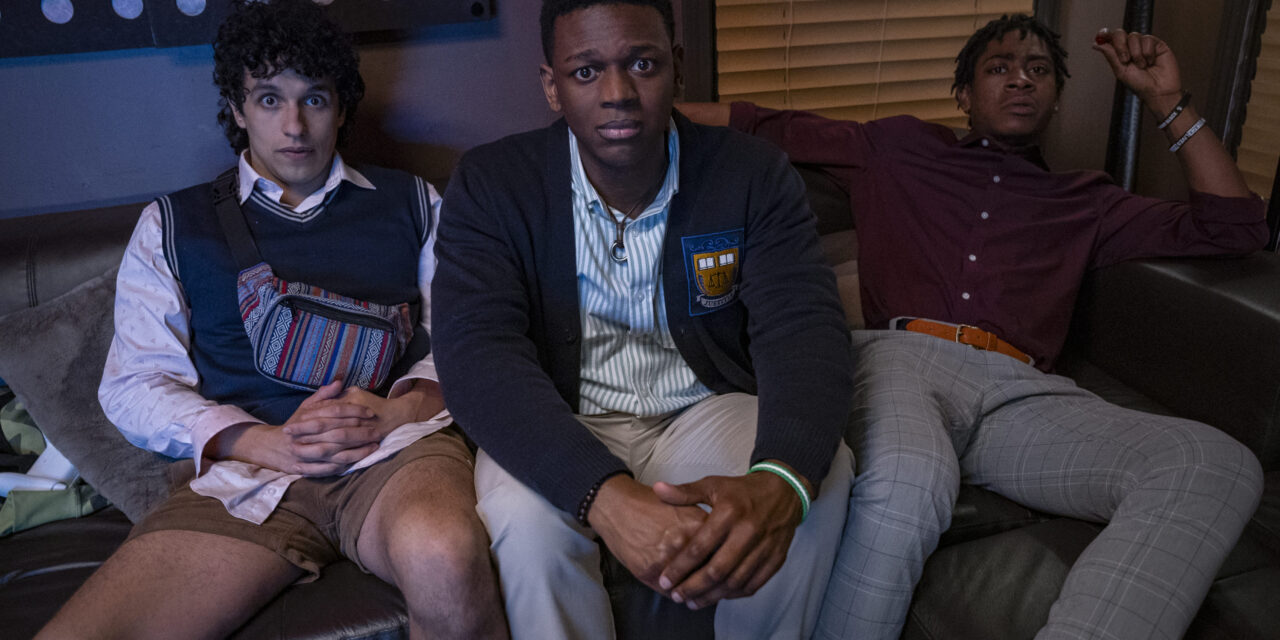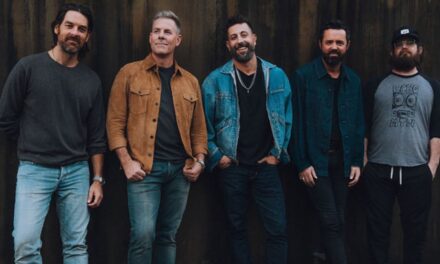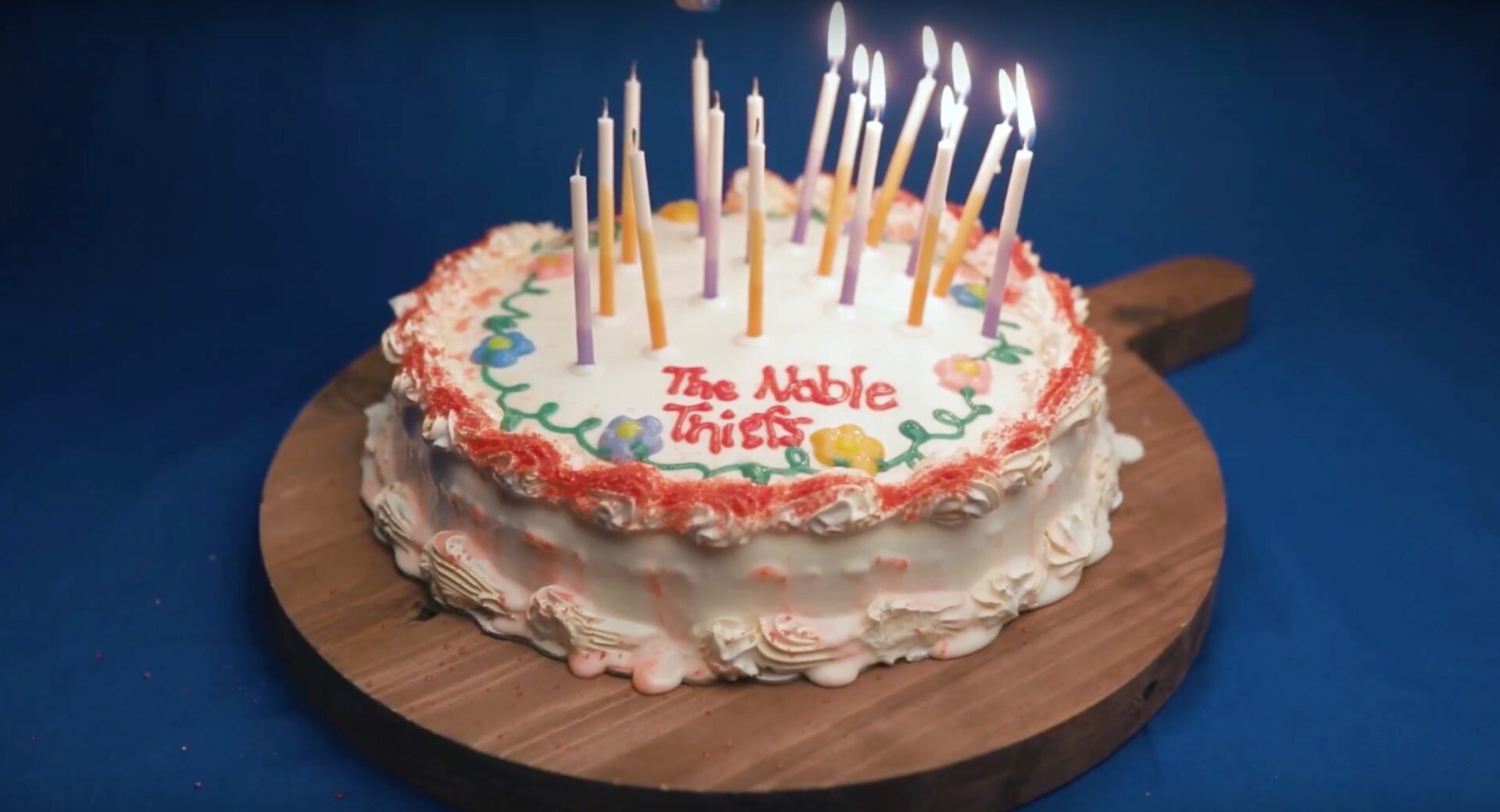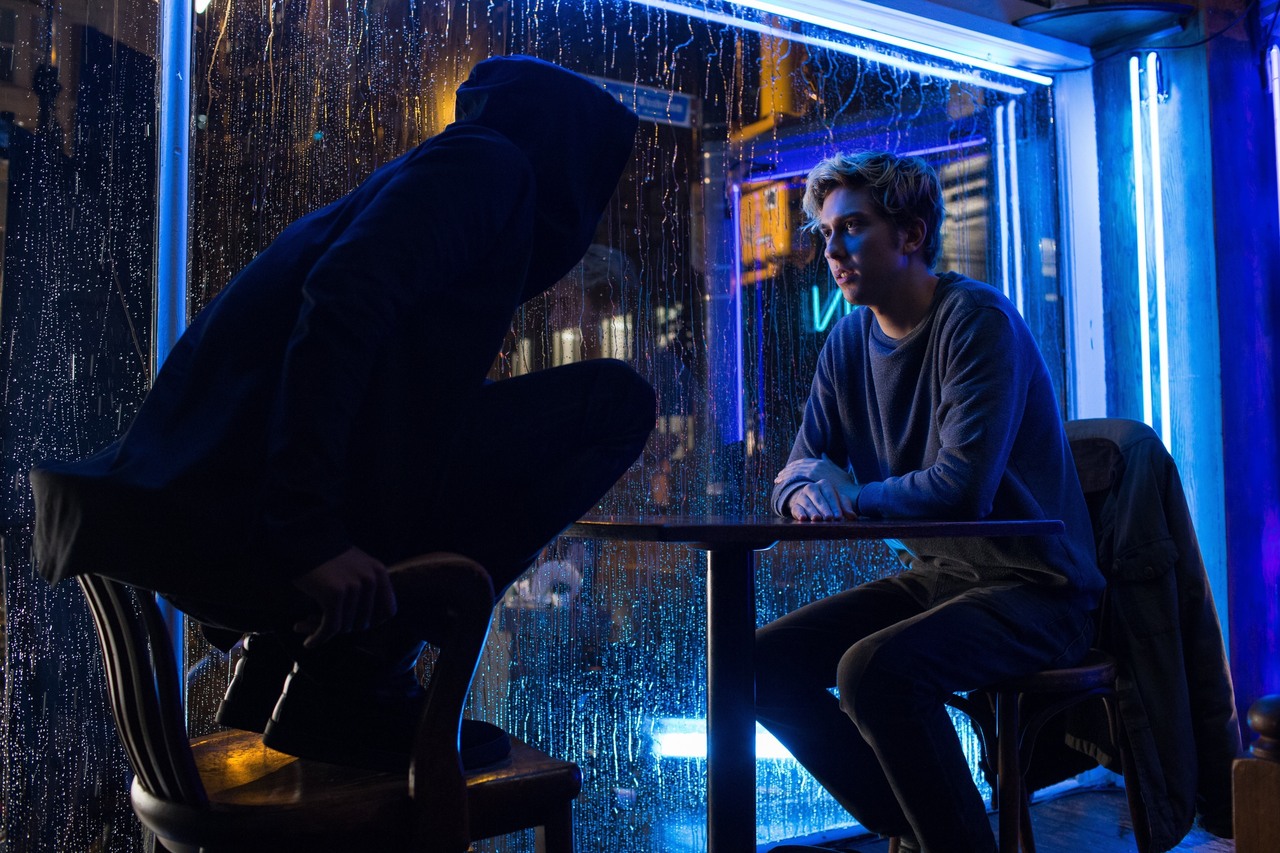When you have a recent coming-of-age buddy comedy film, they usually have the following elements. A group of friends typically predicate all their social hopes and dreams on doing the impossible (and most times, illegal) for one night. In that period, they argue, discover traits about themselves they didn’t know beforehand and then venture triumphantly into the sunrise of the next day. Director Carey Williams and writer K.D. Dávila follows some of those themes in Emergency; their 2018 award-winning Sundance and SXSW short now feature-length film — but with protagonists of color at the center.
Sean (R.J. Cyler) and Kunle (Donald Elise Watkins) are preparing for their last college night of partying as an exclamation point before they potentially go off into different paths. However, when they get home, they and their roommate Carlos (Sebastian Chacon) find a young white female student Emma (Maddie Nichols), passed out in their living room. Emergency feels reminiscent of films like Superbad because of the comedic timing of awkwardness and the unpredictability of the situation. However, it also doesn’t shy away from displaying the biases and hardships young men of color would have to endure if ever in this situation. The film recognizes the current post-George Floyd world that we are in and shows that we have a long way to go to avoid these situations.
The overall message is never heavy. In fact, it’s impressive how the laughs and more similar moments are integrated together. Both Williams and Dávila aren’t afraid to see what trauma does to those who may see the world brighter than it is and how much of a tragedy it is for that to be taken away. Substream talked to Williams and Dávila about how they composed their short film into a feature, how each character’s worldview differs, and what they wanted to accomplish with the social commentary.
Spoilers for the film are below.
Substream: When I saw Emergency, I thought of movies like Superbad and Booksmart. Those buddy comedy movies where a few friends concoct a plan to have a major “last hurrah” are usually white-centered. Emergency follows those story threads at first, but there are little things that distinguish it throughout the movie. It’s subtle, like when the characters stop in a suburban neighborhood, and the neighbors call the cops on them. Emergency was initially a short film, so how was the journey making this story into a full-length feature?
Carey: We made this short that was not intended to be a proof of concept. But when asked if we were doing anything else with the film, I just blurted out that we were making a feature.
K.D.: We had just won the South by Southwest prize, which was a huge shock for us. We made this tiny short film. It was like a play beautifully shot by Harry and Jomo, our D.P. for the short. The response shocked us. At SXSW, they asked Carey, “what are you planning to do with this now? Is there a feature?” He was like, “yes, she’s writing it right now.”
Carey: From the short, I wanted to know where did that relationship between Kunle and Sean go after this night? What was that going to look like a few months from now? With this feature, I was hyper-focused on exploring their friendship and the nuances and complexities of that — especially as two people whom you might not, on the surface, see as being friends. Those differences bring them together and are what they admire about each other. Then there’s that heartbreak when your friend doesn’t see what you see. That excited me about the future in this expansion and this larger canvas.
K.D.: For us, this was always a movie about a social issue that faces both of our communities. I’m Latina. My dad grew up in East LA. I’m from Los Angeles. We wanted to tell a story about the fraught relationship between communities of color in America and the police. But we also wanted to tell a story that would not be like a heavy-handed morality tale saying racism is bad.
We made the short film in 2017, a very interesting, tumultuous period in American history. We wanted to make something cathartic for people to watch who’s been in that position of anticipating how you’re being perceived at all times — especially with the police. Think of the absurdity where we live in a society where, if you’re a person of color in a situation, you have to think, “what’s scarier? The emergency or calling 911?” We wanted to poke fun at that absurdity — it’s a dark comedy. However, we never make light of their situation. The comedy and thriller elements are all mined by that.
Carey: Poking fun at that absurdity, but presenting a beautiful friendship story between two young dudes.
Kunle and Sean are best friends from different backgrounds. Kunle comes from an immigrant family where there are different expectations on this route of becoming a scientist. Sean may not have the same goals, but he sees Kunle’s potential. They view the essence of America through different lenses based on their upbringings. Even though it’s a point of contention that reaches an apex towards the end of Emergency, it also brings them together.
K.D.: Yeah, we talked a lot about where each of them comes from their point of view, informed by their upbringing, and the way generational trauma works. Kunle’s upbringing is similar to immigrant backgrounds, where if you come from a place where you’re the majority, and you move to a place where the minority. There’s a transition period — almost like a loss of innocence. You might not grow up with that same “talk” you get when you’re a kid. Their love for each other is something that we discussed very much, where Sean’s hostility comes from a place of just frustration with wanting so badly to protect his friend.
The third element is Carlos, who is of Spanish descent. His character is compassionate and calm throughout this night of stress and uncertainty that all three friends face together. His experiences and how he approaches situations feels like the needed sympathy for Sean and Kunle that they are missing.
K.D.: It’s funny because we talked about this thoroughly. Carlos is very vulnerable, and he is who he is. He doesn’t have a sense of shame. Yeah. In the beginning, a lot of the arc is about Sean rejecting Carlos in many ways. Sean is embarrassed by being around someone so vulnerable and compassionate. In the end, I think he comes to see the value of such a friend.
Emergency also has things to say about appearances and the lessons from judging people based on that. Maddie and her friends don’t hear any of them out, despite the situation being her fault. Most of these films conclude with a resolution for all the characters involved, but with the handwritten apology, it’s evident that she and people like her have a lot of growing up to do.
K.D.: One thing we wanted to emphasize is that even if you’re well-intentioned, you can still have a bias — even if, from their perspective, all the actions they’re taking are reasonable. But, the audience having all the information, sees the truth — Maddie’s bias is showing, and it’s making things worse. The question at the end is, who is that apology for? Is that for her, or is that for them?
Having her attempt to read a letter, I think it’s become a meme of the YouTube apology videos. We’re so used to these performative apologies. It’s a thematic question at the end; how does one apologize for this situation, and can you?
Carey: It’s always good to leave at the end of your movie with questions. If you’re going to make any piece of art, it’s crucial not just to answer everything, but to pose questions, make people think, and create discourse and discussion. The ending could be a big discussion point. Like K.D. said, who was that apology for? It makes for great things to talk about.
I couldn’t leave without talking about the ending. There’s a huge celebration; however, Kunle is forever changed by the situation. The short came out in 2017, but the full-length is being released in a post-George Floyd America. Emergency mixes the good with the bad. There’s this moment of clarity where all three friends accept who they are as people. But as soon as Kunle hears those sirens, it hits you in the heart. Was it intentional to end Emergency on that note?
K.D.: Extremely intentional. It was the thing we talked about in the very first draft of the script.
Carey: The honest thing to do is to show the trauma he will have going forward from that moment. If we didn’t show that, I think we would be shying away from reality.
K.D.: Kunle is at that moment of joy with his friends. It feels like we all put all this to rest, and it’s all fine. But it’s never going to be okay again. It’s always going to be there. Anytime you hear those sirens, it’s going to come back.
Carey: Having the happy and sad is life. Straight up. There was a time when we were like,” well, maybe we don’t do this ending.” Then it shifted quickly to “no, no, we can’t not show that.”
K.D.: We were very adamant from the inception that this would never be a movie about an incident that would make the news. This is always going to be about one of those not newsworthy incidents. This is going to be this moment that changes these guys’ lives forever. But like, think about how often this stuff happens and never makes the news.
Carey: In that final shot, there is trauma, but resilience and perseverance are there also. Kunle’s eyes have been opened to the world Sean has tried to show him from a place of love and protection. This is the reality, and you will be better equipped to navigate this world and be that excellent person who will change the world better now that your eyes are opened. You know, it is bittersweet.
Read our Sundance 2022 review for Emergency here.
Photo Credit: Prime Video













